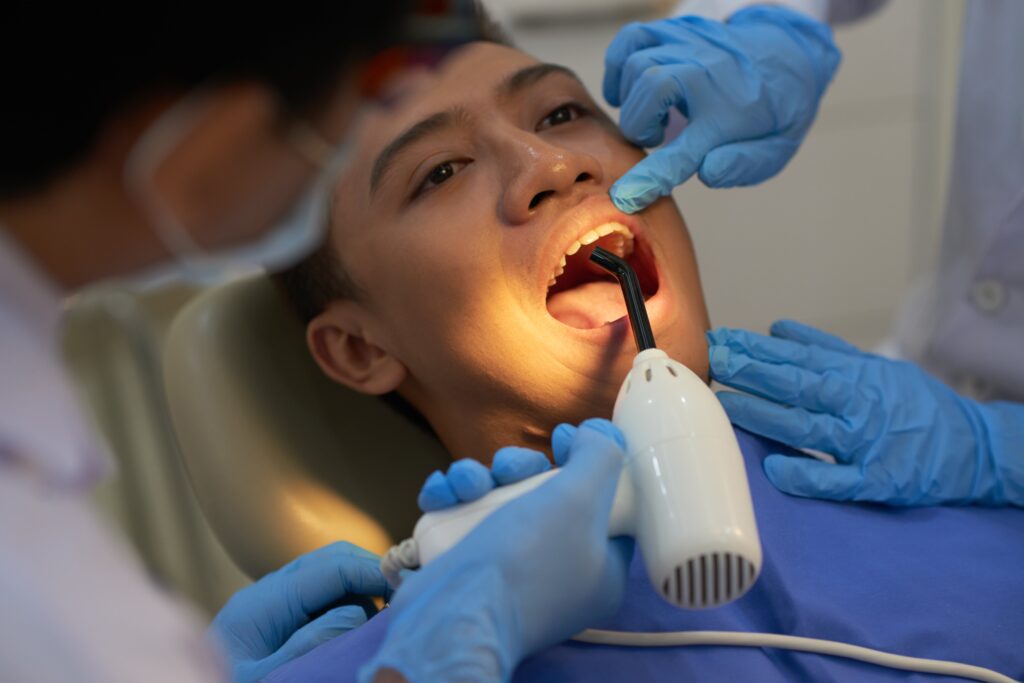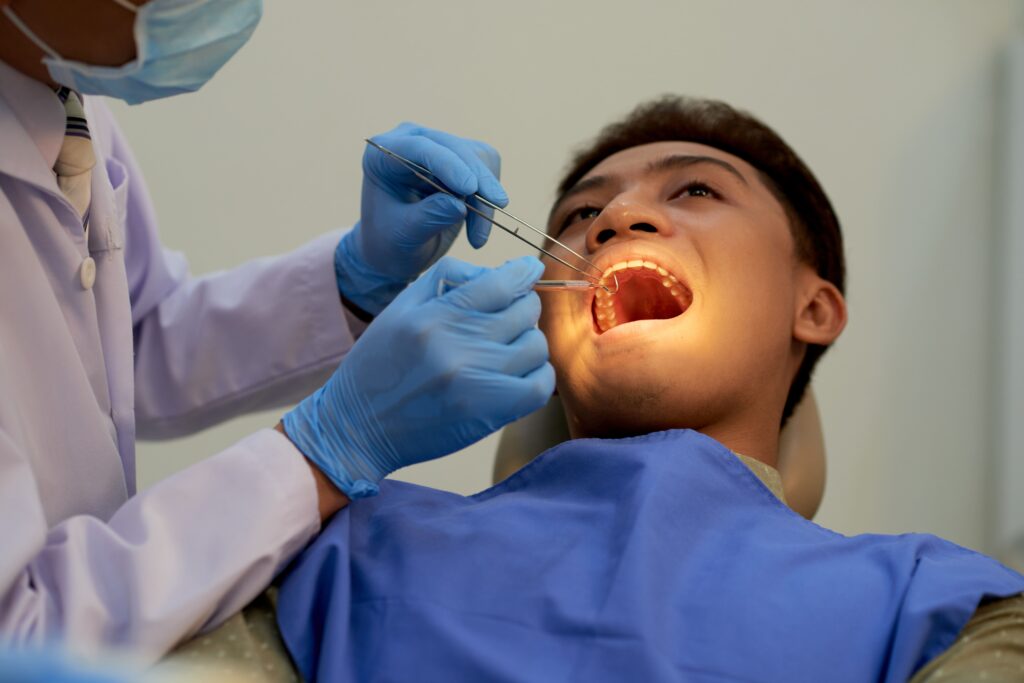Your Guide to Tooth Extraction in the Philippines: Costs, Healing, and FAQs

In the Philippines, tooth extraction is a common dental procedure that is performed for various reasons. Whether you need a tooth extracted due to severe decay, gum disease, trauma, or to create space for orthodontic treatment, it is essential to understand the process and be prepared.
This comprehensive guide will take you through everything you need to know about tooth extraction in the Philippines, from understanding the procedure to the cost involved.
Understanding Tooth Extraction

When it comes to dental procedures, one of the most straightforward yet crucial ones is tooth extraction. As the name suggests, tooth extraction refers to the removal of a tooth from its socket in the jawbone. This procedure is typically performed by a dentist or oral surgeon who has expertise in extracting teeth.
There are various reasons why tooth extraction may be necessary. Let’s explore some common reasons for tooth extraction in the next section.
What is Tooth Extraction?
Tooth extraction is a dental procedure that involves removing a tooth from its socket in the jawbone. It is performed by a dentist or oral surgeon in cases where the tooth is severely damaged, decayed, or poses a threat to the overall oral health.
During the tooth extraction process, the dentist or oral surgeon carefully numbs the area around the tooth using local anesthesia. This ensures that the patient does not experience any pain or discomfort during the procedure. Once the area is numbed, the dentist uses specialized tools to loosen and remove the tooth from its socket.
After the tooth is extracted, the patient may experience some bleeding and discomfort. The dentist will provide specific instructions on how to care for the extraction site and manage any post-operative pain or swelling.
Explained: Reasons for Tooth Extraction
There are several reasons why a tooth may need to be extracted. Some common reasons include:
1. Severe tooth decay that cannot be treated with a filling or root canal therapy
Tooth decay is a common dental problem that occurs when bacteria in the mouth produce acids that erode the tooth enamel. If the decay is extensive and has reached the inner layers of the tooth, a filling or root canal treatment may not be sufficient to save the tooth. In such cases, extraction may be necessary to prevent further damage and infection.
2. Gum disease that has caused significant damage to the tooth and its supporting structures
Gum disease, also known as periodontal disease, is a bacterial infection that affects the gums and supporting structures of the teeth. If left untreated, gum disease can cause the gums to recede, exposing the roots of the teeth and leading to tooth loss. In advanced stages of gum disease, extraction may be necessary to remove severely damaged teeth and prevent the spread of infection.
3. Cracked or fractured tooth that cannot be saved
A cracked or fractured tooth can be a result of trauma, biting on hard objects, or underlying dental conditions. In some cases, the crack or fracture may be too severe to be repaired with dental bonding or a crown. In such situations, extraction may be the only viable option to alleviate pain and prevent further damage.
4. Impacted wisdom teeth that are causing pain or other dental problems
Wisdom teeth, also known as third molars, are the last set of teeth to emerge in the late teens or early twenties. Due to limited space in the jaw, wisdom teeth often become impacted, meaning they do not fully erupt through the gum line. Impacted wisdom teeth can cause pain, infection, and damage to adjacent teeth. Extraction is often recommended to prevent these complications.
5. Preparation for orthodontic treatment, where space needs to be created for proper alignment
In some cases, tooth extraction may be necessary as part of orthodontic treatment. When there is overcrowding in the mouth, extracting one or more teeth can create space for the remaining teeth to align properly. This allows for more effective orthodontic treatment, such as braces or aligners, to achieve a straight and functional smile.
Different Types of Tooth Extraction
There are two main types of tooth extraction procedures: simple extraction and surgical extraction.
1. Simple Extraction: Simple extraction is a relatively straightforward procedure performed on teeth that are visible and accessible in the mouth. Local anesthesia is administered to numb the area around the tooth, and the dentist uses forceps to loosen and remove the tooth. This type of extraction is commonly used for decayed or damaged teeth that can be easily grasped and removed.
2. Surgical Extraction: Surgical extraction is a more complex procedure that is typically performed on teeth that are broken, impacted, or cannot be easily accessed. It may require the dentist to make an incision in the gum to access the tooth. In some cases, the tooth may need to be extracted in sections. Surgical extraction is often necessary for impacted wisdom teeth or teeth with extensive decay or damage.
Regardless of the type of extraction, the dentist or oral surgeon will take all necessary precautions to ensure the patient’s comfort and safety throughout the procedure. They will also provide detailed post-operative instructions to promote proper healing and minimize any potential complications.
Preparing for a Tooth Extraction (what to expect?)
Before undergoing a tooth extraction, it is important to make necessary preparations and understand what to expect during the process. Here are the key steps involved:
Initial Consultation and Diagnosis
If you suspect that you need a tooth extraction, the first step is to schedule an appointment with a dentist. During the initial consultation, the dentist will examine your oral health, review your dental history, and take dental X-rays to assess the condition of the tooth that requires extraction. Based on the diagnosis, they will determine the best course of action and discuss the procedure with you.
Pre-Extraction Health Check
Prior to the day of your tooth extraction, the dentist will perform a health check to ensure that you are in good overall health. They will review your medical history, allergies, and current medications. It is important to disclose any pre-existing medical conditions or allergies to ensure your safety during the procedure.
What to Expect on the Day of Extraction
On the day of your tooth extraction, it is normal to feel a mix of anticipation and anxiety. To make the experience as comfortable as possible, follow these guidelines:
- Arrive on time for your appointment to minimize waiting time
- Wear comfortable clothing
- Bring a friend or family member for support, if desired
- Follow any preoperative instructions provided by the dentist
Once you arrive at the dental clinic, the dentist will explain the procedure again, answer any questions you have, and make sure you are comfortable before proceeding with the extraction.
The Tooth Extraction Procedure

Now that you are prepared for the tooth extraction, let’s delve into the step-by-step process of the procedure:
Step-by-Step Process of Tooth Extraction
The tooth extraction procedure typically follows these steps:
- The dentist administers local anesthesia to numb the area around the tooth.
- Using specialized instruments, the dentist gently loosens and removes the tooth from its socket.
- If necessary, the dentist may need to suture the extraction site to aid in the healing process.
Pain Management During Extraction
During the tooth extraction procedure, the dentist will take measures to ensure your comfort and minimize pain. The local anesthesia will numb the area, preventing you from feeling any significant pain. If you experience any discomfort during the extraction, be sure to communicate with the dentist so that they can make adjustments as needed.
Post-Extraction Care and Recovery
After the tooth extraction, it is essential to follow proper post-operative care instructions to promote healing and prevent complications. Here are some general guidelines to aid in your recovery:
- Bite down gently on a gauze pad placed over the extraction site to control bleeding.
- Apply an ice pack to the external area of the extraction site to reduce swelling.
- Avoid using a straw or spitting vigorously to prevent dislodging the blood clot.
- Take any prescribed pain medications or antibiotics as instructed.
- Maintain good oral hygiene by gently brushing your teeth and tongue, avoiding the extraction site.
- Stick to a soft diet and avoid hot or spicy foods that may irritate the extraction site.
- Attend any follow-up appointments scheduled by your dentist to monitor your healing progress.
Tooth Extraction Cost, and Considerations
Understanding the cost of tooth extraction in the Philippines is an important aspect of planning for the procedure. The cost can vary depending on several factors:
Factors Influencing the Cost
Several factors can influence the cost of tooth extraction, including:
- The complexity of the extraction
- The location of the tooth
- The type of extraction (simple or surgical)
- The expertise and experience of the dentist or oral surgeon
- The geographic location of the dental clinic
Average Cost of Tooth Extraction in the Philippines
On average, a simple tooth extraction in the Philippines can range from ₱1,000 to ₱5,000 per tooth. However, the cost may be higher for surgical extractions or when multiple teeth need to be extracted.
Dental Insurance and Tooth Extraction

If you have dental insurance, it is advisable to check with your insurance provider to understand the coverage for tooth extraction. Some insurance plans may cover a portion or all of the cost, depending on the policy and the reason for the extraction.
Now armed with this ultimate guide to tooth extraction in the Philippines, you are well-prepared to make informed decisions about your oral health. Remember to consult with a trusted dentist or oral surgeon who can guide you through the process and provide personalized care.
For those who live along Quezon City looking for guidance or treatment, Alora Dental Clinic is just around the corner. Feel free to visit us for a consultation tailored to your smile’s needs.
Meet Your Dentist...
Step into Alora Dental Clinic and let us introduce you to our passionate and dedicated dentist, Dr. Angelica Eden Astillero. She’s the type of person who lights up a room with her warm and approachable demeanor. And that’s just the start of what makes her an exceptional dentist.
Dr. Astillero graduated from the University of the East, where she developed a love for dentistry and helping others. Her commitment to continuing education and the latest dental techniques allows her to provide top-notch care to patients of all ages. But what truly sets her apart is her ability to connect with her patients and put them at ease.

Get in touch!
Where to find us?
53 Narra St, Project 3, Quezon City, 1102 Metro Manila
Call us at:
0955-827-6875
